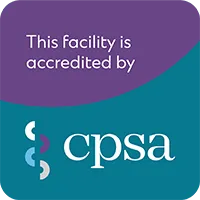The only thing that will change is that you will not be able to make your partner pregnant. Your body will continue to make male hormones. You will have the same amount of semen. Vasectomy won’t change your voice, beard, your muscles, your sex drive, your erections or your climaxes. Some men say that without the worry of accidental pregnancy and the bother of other birth control methods, sex is more relaxed and enjoyable than before.
Open-ended vasectomy is where, once the vas tube is cut, the end from the testicle is left open (i.e. not cauterized), while the end of the tube leading to the penis is closed. Studies have suggested that this is the ideal way to block the vas end. There may be less post-operative discomfort because there is no sudden pressure back-up to the testicles. Vasectomy reversal may also be easier to perform later if required.
Yes, but reversal operations are expensive and not always successful. If you are thinking about reversal, perhaps vasectomy is not right for you. Pre-vasectomy Sperm Banking (cryopreservation) is a good idea for almost anyone considering a vasectomy. An option other than reversal is to have a testicular sperm aspiration procedure (TESA). A needle is inserted in the testicle, and tissue/sperm is aspirated. If sperm production is still good, then a sperm extraction procedure is generally highly successful in terms of obtaining enough sperm for use in fertility procedures; the success rate is 90-95%. Whether sperm is obtained from a frozen banked specimen or from TESA, it is used through in vitro fertilization(IVF).
While we can easily perform your procedure without having you shave at all, we, like other surgeons, believe that this is an important step in performing a meticulous surgery. We believe it is important for optimal visibility and hygienic reasons (keeping hair out of the surgical area during the procedure).
Request Information
Call now: 403 255 6196 | CONTACT US
3223 17th Ave. SW,
Calgary, AB, T3E 7S1


We acknowledge the traditional territories of the people of the Treaty 7 region in Southern Alberta and the Métis Nation of Alberta (Districts 5 and 6).

We welcome patients of all cultures and identities, including those who are gender diverse and gay. We provide services to all.
Kindly note that our clinic will be closed for the holidays from December 24, 2024, to January 1, 2025. We will resume normal operations on January 2, 2025.